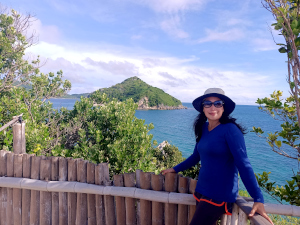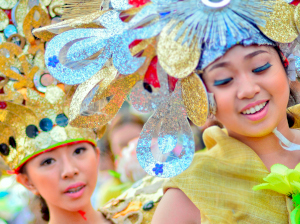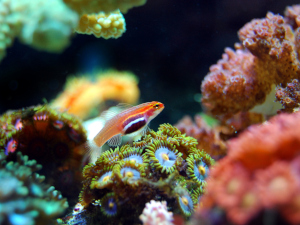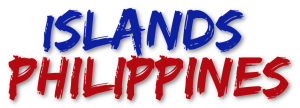 Islands Philippines (IslandsPH.com) is a new type of information resource for the Philippines. We are in the first phase of development at this time, dedicated to building a kid-friendly, fun interactive encyclopedia type experience where visitors of all ages can come to explore and learn about the country and people. The intended audience for this site is anyone wanting to explore and learn about the Philippines in an engaging and fun way.
Islands Philippines (IslandsPH.com) is a new type of information resource for the Philippines. We are in the first phase of development at this time, dedicated to building a kid-friendly, fun interactive encyclopedia type experience where visitors of all ages can come to explore and learn about the country and people. The intended audience for this site is anyone wanting to explore and learn about the Philippines in an engaging and fun way.
Inspiration
The inspiration comes from my childhood where I spent weekends browsing encyclopedias learning about new and exciting things and places, and later doing the same thing at the local library. Most geographic focused sites tend to be travel only covering specific tours and tourist activities. This scope limited approach is fine but we feel we can do better. We want to let people understand the country, it’s people, culture, and really get to know why so many people love to call this place home. We want local Filipinos to be able to learn more about their home country and hopefully contribute to the experience. For potential foreign visitors – they will have the opportunity to learn about what the country is really about, rather than just a Disneyland type set of brochures of fabulous beaches to visit.
The Philippines
 We present regions of the country together with information about how people live, play, work, climate, cuisine, history and government. This is especially important in a country like the Philippines which has such an extensive range of cultures, climates, geographic features, languages just to name a few. It is a country of over 7,600 beautiful islands with the glue holding it all together likely being the friendly and strong family values of its people, regardless of the diverse nature of its many communities.
We present regions of the country together with information about how people live, play, work, climate, cuisine, history and government. This is especially important in a country like the Philippines which has such an extensive range of cultures, climates, geographic features, languages just to name a few. It is a country of over 7,600 beautiful islands with the glue holding it all together likely being the friendly and strong family values of its people, regardless of the diverse nature of its many communities.
I’ve been very fortunate to be able to work and live in many countries around the world, not only across Asia but also North America and Europe. One defining characteristic of the Philippines is how foreigners come here to visit and/or work, fall in love with the country and people, and never want to leave. This happens in many places, but it seems to be a universal constant of the country, not the exception.
Challenges
Several challenges exist in building a site such as this. The amount of research and information is quite large. Each page (many of them) requires active writing and presentation in a modern, consistent, and easy-to-read style. Other projects, particularly our network infrastructure, previously slowed progress by demanding priority. Now, we dedicate much more time to this effort. I also want to collaborate with others who share similar interests and wish to help build the site together.
Future phases of the development will merge community, member, and travel related services into the site. Our main focus of providing an engaging and informative environment to see and learn about the country will always remain, but in time we will integrate other services as appropriate.
The following sections spotlight a few areas of the site.
Regions Across the Philippines
 The Philippines consists of over 7,600 islands. The three main geographical areas are Luzon, Visayas and Mindanao. Luzon includes the largest island (Luzon) and other islands in the northern part of the country. The Visayas are in the middle of the country while Mindanao, in the southern part of the country, includes the second largest island, Mindanao and surrounding islands.
The Philippines consists of over 7,600 islands. The three main geographical areas are Luzon, Visayas and Mindanao. Luzon includes the largest island (Luzon) and other islands in the northern part of the country. The Visayas are in the middle of the country while Mindanao, in the southern part of the country, includes the second largest island, Mindanao and surrounding islands.
Each geographic area consists of several official regions which in turn are home to many provinces (see above link). The main Region page shows a map of the country and links to all regions. Each region has it’s own page providing an overview, map, and a listing with links to each province, major cities and popular tourist destinations within that region. Province pages follow a rough template including quick facts, climate, things to do, fiestas, food, transportation, and other information that are interesting and unique to that particular province. Photo gallery pages specific to a province link back to the province page when available. Pages include embedded videos where appropriate. Links are provided to additional resources where visitors can go to get more in-depth information on the area. The format of these pages is expected to evolve over time.
Fiestas and Culture
 Philippine Fiestas are colorful and vibrant festivals with their roots dating back to the Spanish colonial period. Traditionally rooted in Christian saints, some early festivals were adapted from harvest feasts that celebrated guardian spirits. Today fiestas are found in nearly every town and village across the country. Some are still religious based however many now have their basis in food, agriculture, crafts, or historical or other culturally significant events. If a local town or village has something that can set it apart from the village down the road, you can bet they have a fiesta to celebrate it! Fiestas not only bring people together but also give local communities a much needed economic boost.
Philippine Fiestas are colorful and vibrant festivals with their roots dating back to the Spanish colonial period. Traditionally rooted in Christian saints, some early festivals were adapted from harvest feasts that celebrated guardian spirits. Today fiestas are found in nearly every town and village across the country. Some are still religious based however many now have their basis in food, agriculture, crafts, or historical or other culturally significant events. If a local town or village has something that can set it apart from the village down the road, you can bet they have a fiesta to celebrate it! Fiestas not only bring people together but also give local communities a much needed economic boost.
Today’s fiestas are community celebrations where locals and outsiders come to eat, drink, sing, dance and renew relationships. They can be large, organized, regional events or small town or barangay (village) in scope. According to Wikipedia there are more than 42,000 known festivals in the country. We can’t hope to cover all of these but do make an attempt to document the most prominent (in time).
Cuisine

The cuisine of the Philippines closely intertwines with the nation’s history, geography, climate, and the diverse traditions of approximately 120 ethnic groups, each contributing unique customs and history. It forms a vital part of local art and culture. As the second largest tropical island archipelago in the world, the cuisine showcases this diversity. Seafood plays a major role, while local fruits like bananas, mangoes, durian, pineapple, jackfruit, papaya, guava, avocado, coconut, rambutan, and pomegranate feature prominently in dishes and daily consumption.
Philippine cuisine actively blends foreign foods introduced by traders and later immigrants. Some of the most notable are Malay, Chinese, Spanish, Mexican and American. The merging of the numerous indigenous foods with foreign influences results in what some refer to as the original fusion cuisine.
Marine Ecosystems / Diving and Snorkeling
 The Philippines is a treasure of natural beauty blending vibrant ecosystems, dramatic landscapes, lush rainforests, volcanic peaks, countless waterfalls and a level of biodiversity found few other places. As spectacular as all of this is, there is another side of the Philippines few see which is at least as spectacular and amazing.
The Philippines is a treasure of natural beauty blending vibrant ecosystems, dramatic landscapes, lush rainforests, volcanic peaks, countless waterfalls and a level of biodiversity found few other places. As spectacular as all of this is, there is another side of the Philippines few see which is at least as spectacular and amazing.
The country lies within the Coral Triangle, the global epicenter of marine biodiversity and home to one of the richest marine-life systems on earth. Over 20 years ago I borrowed a snorkel and mask and swam out to the shallow waters off El Nido. It took a bit of convincing to make me go to the effort and endure the minor discomfort of the mask, but when I did, I discovered a new magical world that was quite literally life changing. Nothing has been the same since.
Diving and Snorkeling
The Philippines has some of the most amazing snorkeling and diving destinations in the world. Many however are endangered and need help. Destructive practices such as cyanide and dynamite fishing have decimated coral communities and the fish populations that live and depend on these ecosystems. Coral reefs which once teamed with vibrant life are now destroyed and are now nothing more than rubble. Reduced fish populations put the livelihoods of millions dependent on fishing at risk. The short sighted and selfish practices of a few fishermen looking to make an easy buck is threatening the regional fishing and tourism industries. More importantly they are significantly ruining an ecosystem the entire world depends on to survive.
Saving Ecosystems
The country inconsistently enforces laws banning these destructive practices, and challenges persist in many areas. Institutions like the Institute of Environmental and Marine Sciences (Silliman University) drive gradual progress. Their efforts on Apo and Sumilon Islands demonstrate that these ecosystems can recover and thrive. The critical question remains: can we act quickly enough to restore the region? I believe education holds the key, and through this site and others, I aim to contribute modestly to that effort.
